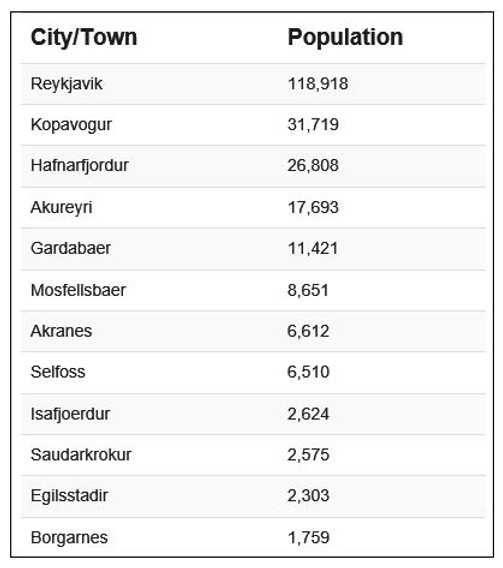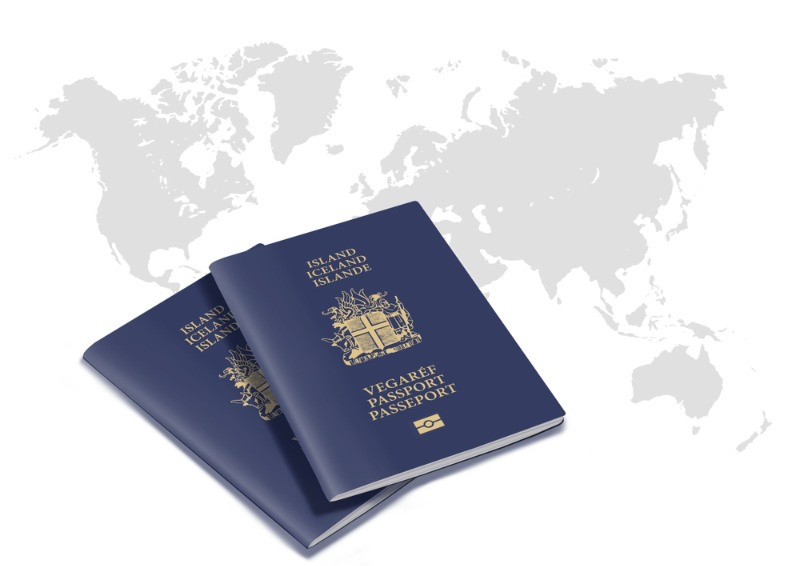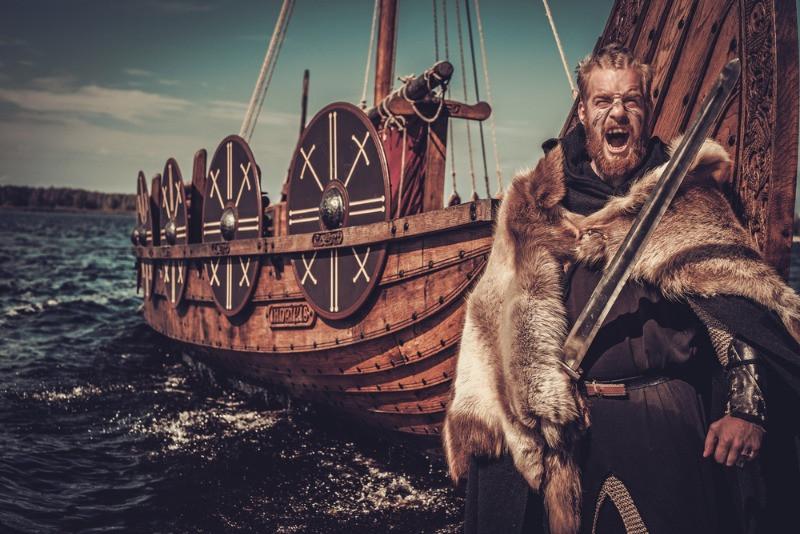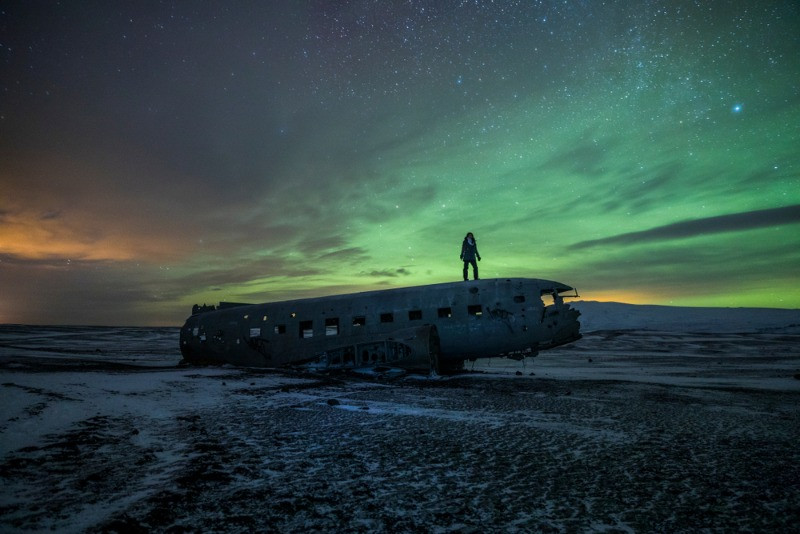Iceland, a Nordic island nation located between the Arctic and North Atlantic Oceans, is an interesting country of stark contrasts. Renting a car in Reykjavik, you can visit ice-covered mountains and active volcanoes on the same day. It is one of the most sparsely populated countries on the planet, but also one of the wealthiest and highly developed.
It straddles the North American and Eurasian tectonic plates and as a result, is one of the most geothermally active places on the planet. Deep below in the earth's mantle, a large magma pocket called the Iceland Plume is thought to have been the creator of what is now Iceland. Approximately 70 million years ago the pressure of the two plates grinding against each other released the lava that over time formed this island nation.Today this geothermal activity continues to shape both the past and the future of Iceland.
The population of Iceland 2020
The current population of Iceland is 341,049 people. The UN Estimated Growth for this 2020 puts the population of Iceland at 341,243.
The fertility rate of Iceland
Iceland is rare in that it has a fertility rate of 2.1 children born per woman, one of the highest in Europe.
The average birth rate in Iceland is 11 per day with only 6 deaths per day. When you add to this the net migration numbers of 1 per day, you have the result that on average the population of Iceland is increasing 6 people per day or 1 person every 240 minutes.
What is the female to male ratio in Iceland?
The current ratio is 1.0. In 2020, there are 178.090 females vs 188.040 males in Iceland.The world average ratio is 1.01; if the rate is above 1, it means there are more males than females in a specific proportion. If the rate is below 1, the female counterpart would be more numerous. Even though in Iceland there are more males, the numbers are still quite close to keep the 1:1 balance.
If we take a deeper look, the gender ratio varies according to age segmentation. The ratio is 1.4 from 0-14 years. And the lowest, 0.98 for people over 65. That can be explained by women having a longer life expectancy.
The average age in Iceland
The median age is only 36.5 years old which is fairly young for such a developed country and the life expectancy is 83.1 years.
How big is Iceland?
Currently, Iceland has a surface area of about 103,001 square kilometers and is ranked as the 108th largest country in the world. This gives the country a population density of 3 people per kilometer, the lowest of any country in Europe.
Iceland’s most populated cities
Population of Reykjavik
Reykjavik is by far the largest city in Iceland and is also the capital. If you look at the population of the city and the surrounding region, nearly 60% of all people in Iceland live here.
Here is a brief breakdown of cities and population in Iceland:

What is the ethnic makeup of Iceland?
In 2021, Iceland's ethnicity comprised: 81.3% Icelandic, 5.6% Polish, 1% Danish, and 12.1% other backgrounds. There are about 8,000 people of Polish descent in Iceland, accounting for 75% of the workforce in Fjarðabyggð.
About 13% of the population was born abroad and 6% hold foreign citizenship. Currently, there are about 88,000 people of Icelandic descent in Canada and more than 40,000 in the United States.
Genetic analysis of the current population of Iceland shows the original population was of both Nordic and Gaelic descent. In one study, the results found that most of the men were from Nordic countries while the women come from Gaelic origins.

Quality of Life in Iceland
In the World Happiness Report of 2018, Iceland ranked at number 4 with a rating of 7.495. The rating comes from looking at different factors including GDP per capita, social support, life expectancy, freedom to make life choices, generosity, and perceived corruption.
Additionally, 100% of the population has improved access to clean drinking water and only 1.2% of the population struggles with access to improved sanitation facilities.The average school life expectancy is at 20 years. Females tending to spend 21 years in education while males are expected to stay in for 18 years.
A brief history of the country
Many of the current residents of Iceland come from the Norsemen of Northern Europe as documented in the Landnámabók, or the “Book of Settlements”. This ancient five-part manuscript tells the tale of how the Norsemen discovered and settled Iceland in the 9th and 10th centuries.
Sigurður Nordal, a noted academic that passed away in 1974 stated that: “No Germanic people, in fact, no nation in Northern Europe, has a medieval literature which in originality and brilliance can be compared with the literature of the Icelanders from the first five centuries after the settlement period”.
Because the current Icelandic language is almost identical to the original language of those first settlers, the people of Iceland grew up learning about the early days of the country, the people and the personal history of those brave men and women that made the journey of exploration to settle in this land of contrasts.
The Landnamabok
The Landnámabók talks of how the early Norsemen upon arrival found items left behind by Irish monks such as books, bells, and crosses. While it is a bit of speculation, it is thought that these monks or “wandering Christians” left the island because of their dislike for the “northern heathens”.
The name, Iceland, was given to the land when the now-famous Norseman sailor Flóki Vilgerðarson saw some drift ice in the fjords of the island. The first permanent settler was Ingólfur Arnarson who with his family landed in the area of present-day Reykjavik in the year 874 AD. Over the next 60 years, many of his countrymen fled the rule of King Harald of Norway and by 930 AD all the arable land in Iceland had been settled.

The country was heading towards a period of rapid growth when the ruling chiefs decided they needed a new legislative body. Thus the now oldest nation-wide parliament in the world was formed in Alþingi.
In those early days, much of Iceland was covered by Birch trees. Unfortunately, as more people arrived, those trees were quickly cut down and used for ships, homes, farmsteads, and burnt in the colder months to keep warm. This rapid deforestation of Iceland was to have major consequences on the arable land of Iceland that is still impacting the lives of people today.
Icelandic way of living
With most of the trees gone, after the 14th century, the people of Iceland switched back to building sod homes known as an Icelandic Turf House. While they did offer some protection from the elements, these homes were often cold and susceptible to damage from rain.Trade has always been a of major importance to survival on Iceland. With a country of farmers and abundant cattle, sheep, fish, pigs, horses, and poultry, Iceland traded with many countries to get the survival and luxury goods its people desired.
Iceland religion and beliefs
In the early years of Iceland, the people held on to their Norse mythology belief system, but when Olaf Tryggvason of Norway ascended the throne in 995 AD, he started the process of converting the people to the Christian faith. It was not an easy task and lead to a trade war with Olaf shutting down access to the Norwegian ports and thus bringing the country almost to civil war.
To resolve the issue, Þorgeir Þorkelsson, a pagan lawspeaker, was elected to decide whether Iceland should become a Christian country or not. Þorgeir was respected as a reasonable man who could act in the role of mediator for both sides.
After spending a day and half under a fur blanket he finally decided that Iceland should move forward with a new faith. He brought his pagan idols to a waterfall and threw them in as a sign that he was abandoning his old faith and adopting a new one. The waterfall today is known as Goðafoss or “Waterfall of the Gods” and is a popular visitor attraction.
During the 13th century, the largest known battle in Icelandic history took place in what is called “The Age of Sturlungs”. On one side was the powerful clans that wanted to remain independent of Norway and on the other was the forces that believed Iceland should be a subject of Hákon the Old, King of Norway. At the Battle of Örlygsstaðir, Sturla Sighvatsson was routed, but over the years that followed, Hákon finally in 1262 was able to get the Gamli sáttmáli or "Old Covenant" signed and this ended the Icelandic Commonwealth.
It was a century later when Norway granted Iceland to Denmark’s Christian III, and through his imposed will, the country finally turned to Lutheranism. Most people of faith today in Iceland remain Lutheran.
Hardships
In the 18th century a major famine hit Iceland when the Laki volcano started erupting and went from June 1783 to February 1784. This wiped out about 80% of all livestock in the country and the famine that followed killed up to 25% of the population. During these hard times now known as the “Mist Hardships” or Móðuharðindin in Icelandic, social order broke down and looting became commonplace.
The Laki volcanic eruptions had a global effect that was felt around the world and was one of the contributing factors that lead to the French Revolution.
Iceland in the Second World War
The Second World War was a major turning point in the development of Iceland as a nation. After Germany invaded Northern Europe, Britain quickly set up and launched “Operation Fork” to invade Iceland. While Iceland was neutral at the time, Britain was worried that if Germany took over the country, they would have a stranglehold on the Atlantic shipping lanes that was vital to the survival of Britain.

Upon landing on the shores of Iceland, the British military was met with open arms, but also a strong clear message that Iceland was neutral. The Icelanders even helped the British unload supplies from their ships. The British and Canadian armed forces quickly set up control of the country and held it until the Americans joined in the War in Europe.
During those years of occupation, a large amount of development was undertaken to improve the infrastructure of Iceland. Things such as what is now known as Keflavik International Airport, new hospitals, harbor upgrades, and major road construction. These developments proved to be highly beneficial to the growth of Iceland but were also controversial as much of the population continued to protest their neutrality while still cooperating with the Allied forces.
Iceland independence
As the war was nearing a conclusion, on June 17, 1944, Iceland voted for independence from Denmark with a 98% approval rate. It had been agreed that at the end of the war the Americans would leave, but that turned out to be a hollow promise as the Cold War soon started and the strategic position of Iceland continued to be both a benefit and a detriment to the full independence of Iceland.


 By
By


